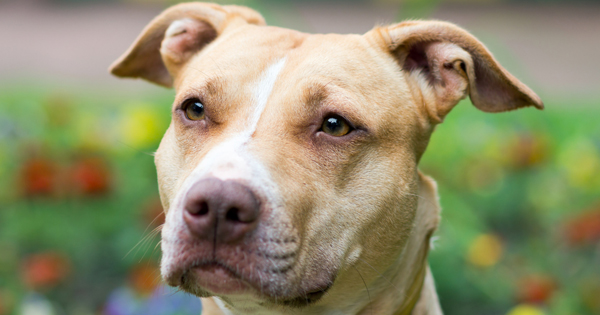Everyone has a different description of a dangerous dog. For some, it’s how a dog looks, for others it is how a dog acts. Dog ownership laws governing the care and management of so-called dangerous dogs usually fall into one category or another, but rarely both. While an animal with a history of aggression should absolutely be given restrictions and penalties, what about dogs who are beloved, socialized, well-trained family pets, but look a certain way? Should those dogs be subject to restrictions too?
It is a common misperception that only Pit Bull-type* dogs are subject to breed bans around the world, but that simply isn’t true. Tragic circumstances can occur with dogs of any breed, from Shiba Inus, to Saint Bernards, and laws that impact dog ownership based on the appearance of a dog have been proven not to reduce dog bites. Spay and neuter, licensing, leash laws, and education to support responsible pet ownership are far more important (and more effective in promoting public safety) than forcing people to hide their cherished pets from the law. Still, think that only Pit Bull-type dogs are subject to such laws?
Here are three examples of “Dangerous Dog” laws based on a dogs’ appearance or breed. As you read these laws, think about what type of dog they might be referring to:
Northern Ireland, current law (established in 1950):
Not only can a person only walk two of these breeds of dog in public, but also:
“A person shall not exercise or lead or cause or permit to be exercised, led, or at large a [this breed of dog] in any street, road, highway, or other public place or in any place to which the public have or are permitted to have access…unless such dog is both under control and muzzled.”
College Park, Georgia, current law (established in 1989):
In addition to special licensing, microchipping, fencing, and “Beware of Dog” sign requirements, owners of this breed (and five others) must:
“Carry a policy of insurance of at least $100,000…insuring the owner…against liability for any personal injuries inflicted by the dog.”
Fairfield, Iowa, current law (amended to add breeds in 2004):
This locality has 13 breeds and mixes listed in the same “dangerous” and prohibited category as tigers, gorillas, and alligators, but at least these dogs can be walked in public,
“provided such animal is secured on a leash four feet or shorter.”
So what breed of dog has to wear a muzzle in public in Northern Ireland? The Greyhound.
What breed will cost their owner a pretty penny in insurance in College Park? The German Shepherd.
And which breeds are as dangerous as captive tigers? According to Fairfield, Iowa, it’s the Siberian Husky.
Approximately 100 dog breeds have ownership restrictions in our country, from kenneling or care requirements to outright bans, including Chihuahuas, Chow Chows, Great Danes, and dogs who appear to be a mix of a banned dog (even if they are proven with DNA testing to not be a dog of that breed).
History has shown that breed bans and restrictions don’t keep our communities safe — responsible ownership laws do. So, the next time you think “a breed ban won’t happen to my dog,” please realize that history shows it could. Let’s keep our communities safe and informed. Let’s do what has been proven to work. Let’s say goodbye to breed restrictions and hello to strong, enforceable dog laws that protect pets and people, no matter what they look like.
*In my columns, I often use the term “Pit-Bull type” to describe a group of dogs who share a basic appearance, but may not actually be American Pit Bull Terriers because that is how these dogs might typically be described by the public. The description of “Pit-Bull type” dogs can vary by jurisdiction to include breeds that are completely unrelated to the American Pit Bull Terrier such as purebreds or mixes of Boxers, Mastiffs, Bull Terriers, and Bulldogs. “Pit-Bull type” is really no more accurate in describing a dog’s behavior than saying that all dogs with floppy ears are “Retriever-types,” and I look forward to the day when our communication about dogs can move past their appearance and focus on their behaviors.







